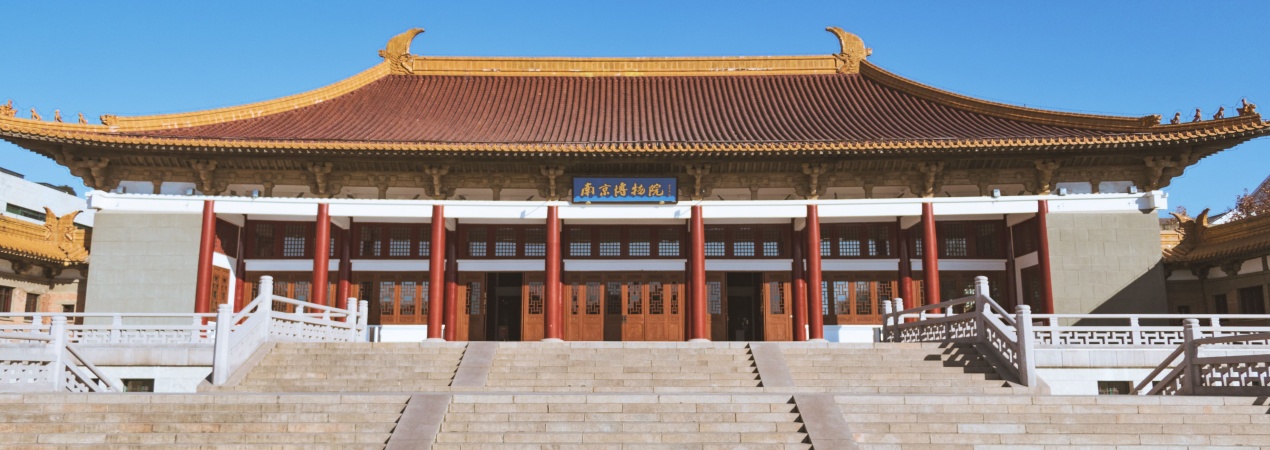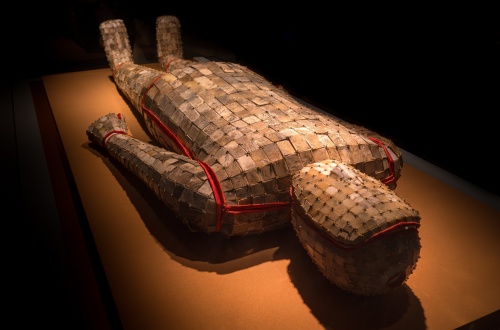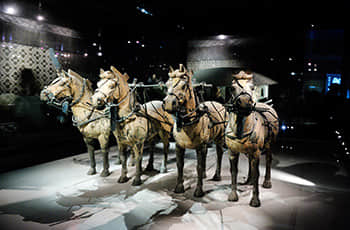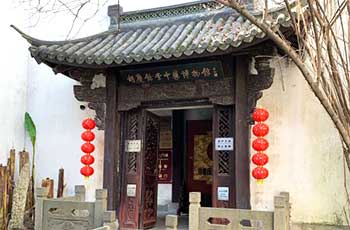Nanjing Museum

Nanjing Museum covers an area of more than 130,000 square meters and features a layout of "one museum with six halls" — the History Hall, Special Exhibition Hall, Digital Hall, Art Hall, Intangible Cultural Heritage Hall, and Republican-Era Hall. It also houses the only national folklore research institution among museums in China. Among its establishments, the Cultural Relics Conservation Institute is known as the "top-tier medical center for cultural relics" and serves as a key scientific research base of the National Cultural Heritage Administration for the conservation of paper-based cultural relics in China.
- Chinese name:南京博物院Nán Jīng Bó Wù Yuán
- Recommended Duration: 2-3 hours
- Entrance Fee: Free
- Opening Hours: 9:00-17:00, closed on Monday
- Best time to visit: March, September
- Address: No. 321, Zhongshan East Road, Xuanwu District, Nanjing City, Jiangsu Province
-
How to get there:
By bus: Take routes 5, 34, 36, 55, 59 and get off at Zhongshanmen Station.
By Metro: Take Line 2 and get off at Ming Palace Station, then go 300 meters east from Exit 1 to get the Nanjing Museum
Highlights of Nanjing Museum
History Hall
 The Jade Burial Suit Sewn with Gold Thread in the History Hall
The Jade Burial Suit Sewn with Gold Thread in the History HallWith "Ancient Civilization of Jiangsu" as its theme, the History Hall exhibits cultural relics from the Paleolithic Age to the Ming and Qing dynasties. It houses many treasures of the museum, such as the Jade Burial Suit Sewn with Silver Thread, the Golden Seal of Prince Guangling, and the Brick Murals of the Seven Sages of the Bamboo Grove—all telling stories spanning thousands of years. Besides, various exhibits like bronze wares, ceramics, calligraphy, paintings and silk fabrics clearly outline the development of Jiangsu's regional civilization, making visitors feel like walking through the long river of history and experiencing the profound heritage of Jiangsu's ancient civilization.
Republican-Era Hall
 The restored Republican-era architecture
The restored Republican-era architectureThe street scenes of Nanjing in the Republic of China period are recreated in the Republican-Era Hall. Trams, old platforms, small taverns and retro signboards all build a strong sense of that time. Shops with a Republican-Era style line both sides of the street, and all are open. Visitors can buy nostalgic things here, like Jinju Wan. They can also get Nanjing Museum’s postmark at the post office. Upstairs from the post office is the Pioneer Bookstore, where staff all wear clothes from the Republic of China period. Here, visitors can buy stamps and send postcards. It makes them feel like traveling back to the Republic of China era a hundred years ago, immersively feeling the mix of daily life hustle and history.
Intangible Cultural Heritage Hall
Centering on the theme of "Su Yun Liu Fang" (literally meaning "The Charm of Jiangsu Endures"), the Intangible Cultural Heritage (ICH) Hall presents a dynamic display of Jiangsu's intangible cultural heritages, including traditional crafts, operas and folk customs. Inheritors of folk crafts such as paper-cutting, embroidery and sugar painting give on-site demonstrations. Visitors can watch these exquisite skills up close and even take part in interactive experiences, feeling the warmth of craftsmanship and the continuity of culture. Besides, visitors can also enjoy performances like Kunqu Opera, Nanjing Baiju (a local folk opera) and Pingtan (a traditional storytelling and ballad-singing art). They can also watch 3D videos for free in the small theater of the ICH Hall to gain a deeper understanding of Jiangsu's intangible cultural heritages.
Digital Hall
The Digital Hall uses multimedia interactive devices to "bring cultural relics to life". Through modern technological means such as touch screens, holographic projections and AR technology, the hall restores ancient scenes. For example, the animation "Scroll of Prosperous Scenery in the Southern Capital" is similar to "Along the River During the Qingming Festival " displayed in China Pavilion at the World Expo, vividly showing the prosperous scenes of ancient times. There are also many interactive games here. Visitors can touch the screen to play games set in ancient times. Both children and adults can learn historical knowledge in a fun way here and experience the perfect integration of technology and culture.
Educational Value
The exhibition layout of Nanjing Museum takes "Jiangsu's regional civilization" as its core thread. Spanning from primitive relics of the Paleolithic Age (such as cultural relics from the Xiaocaowan Site in Sihong) to the cultural heyday of the Ming and Qing dynasties, and extending to Republican-era life scenes and the living inheritance of intangible cultural heritages, it forms a "coherent and concrete" historical narrative. For ordinary visitors, it goes beyond the "fragmented" historical knowledge points in textbooks. Through physical cultural relics, scene restoration and technological interaction, it turns abstract history into something tangible and perceptible. For teenagers, this "immersive historical experience" helps them establish a "temporal and spatial framework", enabling them to understand how Jiangsu developed from an "interfusion hub of Wu and Chu cultures" in ancient times to a "cultural center" in modern times, and further connect the context of China's general history.
Activities to do at Nanjing Museum
AR Glass Guided Tour: Nanjing Museum has launched an AR glass guided tour, which includes over 60 pieces of guided content. Using visual recognition and voice commands, visitors explore artifacts from multiple angles, discovering their cultural significance hands-on.
Drop us a line and we'll connect you with the top China expert in no time!
 Shaanxi History Museum
Shaanxi History Museum  National Museum of China
National Museum of China  Suzhou Museum
Suzhou Museum  Traditional Chinese Medicine Museum(Hu Qingyu Tang)
Traditional Chinese Medicine Museum(Hu Qingyu Tang)